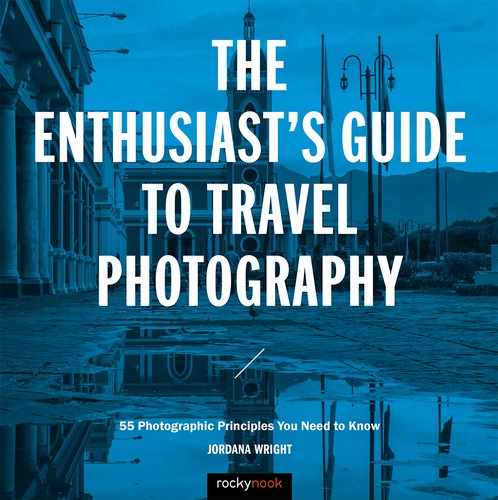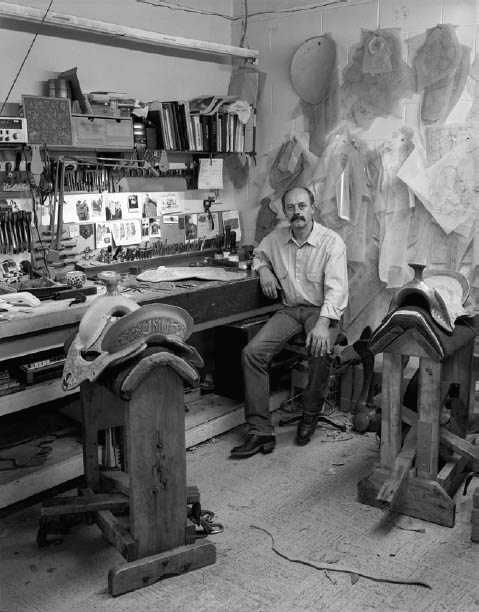34. ENVIRONMENTAL PORTRAITS
![]()
THE STRONGEST PORTRAITS offer more than a flattering representation of a smiling face. So often we judge images of ourselves and others by how attractive we look in them, but anyone can take a nice photograph of a friend or stranger isolated on a studio backdrop or against a benign wall. When we step into the realm of travel portraiture, traditional concepts of beauty are immediately less important than sense of place, cultural insight, and summation of a moment.
In your travels, the best portraits will utilize setting, atmosphere, activity, and experience—or in other words, the environment of a moment. Whether you’re photographing locals in their element or your fellow travelers experiencing the journey alongside you, the strongest, most compelling portraits rely on the environment.
Choosing Your Subject
As you travel, you will naturally gravitate toward certain situations and subjects. Wrinkly old men are a popular portrait subject for many because each crease and line on their faces seems to carry the tales and gravitas of a long, storied life. Plus, in my experience, wrinkly old men are fun to talk to. Others may prefer the innocence found in a child’s face, or the elegance and statuesque look of a beautiful woman.
The most important step of creating an engaging environmental portrait is finding a subject with visual attraction. By this I don’t mean traditional notions of attractiveness. A man begging on a street corner in rags might possess more visual attraction for you than a gorgeous woman dressed in Gucci. Something made you notice this person as a potential subject. What was it? Was it the color and intensity of their eyes? Was it how they carry themselves? Their clothing? Scott Schuman, a photographer more famously known as the Sartorialist, has made a career of photographing the uniquely dressed real people he happens to find in his travels. Impeccable style and the role of fashion in real life are what draws him. What draws you?
If you’re lucky enough to travel with friends or family who don’t mind being photographed, you’ll potentially find a lot of visual attraction in them because you know them and are sharing the experience. You’re seeing the places you travel not only through your own eyes but through theirs. One of my favorite subjects for environmental portraits is my husband, Cassius (Figures 34.1 and 34.2). This isn’t because I find him to be particularly dreamy (which I do), but because love of travel is such a big part of his personality. He lives for the wild and exciting moments of our adventures, and it shows in his expressions—both facial and physical.
When I photograph Cassius, each image begins as an authentic moment of experience. I don’t simply say, stand in front of that vista and smile. I watch his face carefully for the unguarded moments of emotion and experience and do my best to capture them as they are. Sometimes I might say, hold that right there, or do that again and look at me, but there’s always an authentic foundation in my images of him.
Letting the Environment Do the Heavy Lifting
As I mentioned earlier, even the most compelling portrait can be improved by making use of an intriguing environment. Sometimes the shot will set itself up right in front of you. You’ll find a subject that you want to photograph who is actively engaging with an interesting and unique environment.
During an assignment in Spain, I had the opportunity to take some of my favorite environmental portraits to date while documenting the cork harvesting process. I visited private cork estates and was able to observe the regional differences in the process—from the variations in the landscape and climate, to the attire of the harvesters—and each situation offered unique opportunities to photograph locals in their element. These portraits gain their appeal not just from the beauty of the environment, but from the way the subjects actively engage with it: from a harvester overseeing the progress (Figure 34.3), to an estate owner enjoying the fruits of his labors (Figure 34.4).
34.1 Smoking a fresh Nicaraguan cigar, Doña Elba Cigars, Granada, Nicaragua.
ISO 100; 1/40 sec.; f/3.5; 24mm
34.2 Scrub Island, British Virgin Islands
ISO 100; 1/400 sec.; f/4; 17mm
34.3 Andalusia, Spain
ISO 100; 1/160 sec.; f/5.6; 81mm
34.4 Catalonia, Spain
ISO 125; 1/80 sec.; f/3.5; 20mm
Along those lines, as you travel, pay careful attention to people performing their jobs for excellent photographic opportunities. Whether you photograph a chef working in a kitchen (Figure 34.5) or a fisherman tossing out a net, such subjects are active and engaged in their environment and your photographs will be stronger for it.
One of the most prolific environmental portrait photographers in my estimation is Jay Dusard, who most frequently focuses his camera on capturing the day-to-day lives of cowboys and ranchers. Through intensely detailed images, he keeps the full depth of location in focus, allowing not only the subject’s visage but the accoutrements of their profession to speak volumes. A rancher poses with his family in a barn, still wearing the shoulder-length glove used during cattle insemination. A saddlemaker poses in his workshop, framed not only by his finished work, but by the tools and materials that help him craft each piece (Figure 34.6). Each of Dusard’s portraits feels similarly handcrafted (Figure 34.7), as though he surveyed every detail before shooting, while maintaining an authentic environment and an insight into a world most of us rarely get to experience.
As you travel, take a page from Jay Dusard’s book and fill each frame with intentional detail that will help provide insights into not only the moment of the image, but the personality, interests, and character of the subject. Connect the subject to their environment through posing, color, framing, or action, and you’ll be on track to create some very compelling travel portraits.
34.5 Harry’s Seafood Grill, Wilmington, Delaware
ISO 1000; 1/30 sec.; f/3.5; 50mm
34.6 Chuck Stormes, Saddlemaker, Calgary, Alberta, 1988
From The North American Cowboy: A Portrait, by Jay Dusard
34.7 Ed Hope and Wade Cooper, ZX Ranch, Oregon, 1981
From The North American Cowboy: A Portrait, by Jay Dusard







